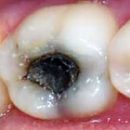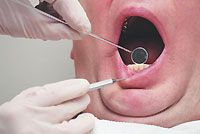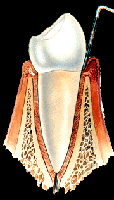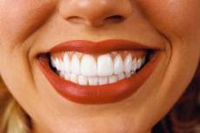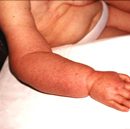What are the modern bite correction devices? What are the pros and cons of braces?
Content
Contrary to emerging opinion, the root tooth is not fading motionless with the jaw bone. Just its root is tightly pulled in a dental hole with thin fibers of the connective tissue. These elastic threads are located in a narrow gap between the bone wall and the root of the tooth. Teeth are capable of moving on their own when teething.
They give up and the action of forces specifically applied to change their position. When a small long-term pressure is directed to the wall of the tooth hole, it is absorbed in this place, opening the tooth space for moving. And on the other hand, where the fibers of the connective tissue stretch, a new bone is formed, a supporting tooth that does not give it to return to the previous place.
This biological property is also remarkably the fact that it remains throughout life. Thus, nature has taken care to ensure that this injustice has always been able to eliminate this injustice to. With the help of, of course, specialists.
What are the modern bite correction devices
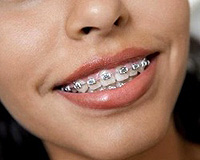 Devices for bite correction are divided into mechanical, leading teeth into a decent view due to pressure springs and arcs, and functional - affecting the muscles of the maxillofacial area and language.
Devices for bite correction are divided into mechanical, leading teeth into a decent view due to pressure springs and arcs, and functional - affecting the muscles of the maxillofacial area and language.
The latter are called trainers and good, if a child is 7-10 years old. They can stimulate or slow down the growth of jaws, change the width of the nose and the shape of the jaw bones.
Mechanical means, in turn, are divided into removable and non-removable systems to correct bite.
Removable systems
These are primarily removable plates, which are a hypoallergenic plastic form for upper or lower jaws. The plate is manufactured individually, in the cast, and is held on the patient's teeth with wire hooks. While eating, cleaning teeth, it can be removed in order to put on again. To straighten the curves of the teeth in the removable apparatus, the wires, loops and springs. If the task of expanding the jaw, between half the plates and insert the expanding screw. Gradually, with the replacement of the forehead on more and more appropriate to the correct form of the teeth, this system aligns the dental row.
Such systems are conveniently removed before meals, wash and clean. However, the effectiveness of their use is high only in children under 12 years - while active formation of jaws is. In addition, children love to remove the records very much at every way and often forget to wear them.
Failure systems (braces)
There are also non-removable mechanical systems - popular braces today.
Failure hardware is built into the mouth to the entire course of treatment. Its structural knots are glued to the teeth and are not removed. Even when, with the help of various power elements, the system is subject to regulation by a doctor.
Translated from English Bracket means «Skobe». In fact, this «Skobe» It is an extremely difficult configuration, highly accurate and jewelry according to the product.
Braces are mainly made of medical stainless steel. However, there are braces and gold, from precious stones, from pure titanium, single crystal, composite, ceramics, special fiberglass, plastics…
The set of braces consists of 20 elements, of which 10 are glued to the upper teeth, 10 - to the lower with a special glue. The doctor sticks braces for each tooth in a certain sequence, and then binds them together by the arc, which is inserted into the horizontal groove of the bracket and is fixed for «wings» Elastic or wire ligature. The arc is fixed on special metal rings that wear on supports - as a rule, these are sixth teeth.
Wire connecting the elements of the bracket has a memory. It sets the teeth a programmed direction of movement towards the correct position in the mouth. Wire arc of a particular section, of one or another profile is fixed with a definite defined degree of tension.
The peculiarity of the wire is that it is superlastic. Overlasticity manifests itself in the fact that you can twist this wire, bending, tie a loop - in vain work, it will immediately return to its original condition. But it is starting position - just set in memory.
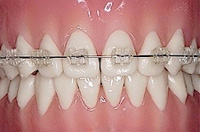 The form may be an intended intricate, however, when a certain temperature is on the occurrence of a certain temperature, I say, 36.6 degrees Celsius, wire, whatever before, «remembers» and takes the outlines that she was asked. If you put it in the refrigerator, it will lose form. Then, warming up in the mouth, will restore. And this recovery in this case will take the nature of the work on the stretch, to the force of the tooth to straighten your posture.
The form may be an intended intricate, however, when a certain temperature is on the occurrence of a certain temperature, I say, 36.6 degrees Celsius, wire, whatever before, «remembers» and takes the outlines that she was asked. If you put it in the refrigerator, it will lose form. Then, warming up in the mouth, will restore. And this recovery in this case will take the nature of the work on the stretch, to the force of the tooth to straighten your posture.
Breket performs the will of the doctor as to which direction and to what extent to turn, or tilt, or, tilting, rotate one or another corrected tooth. «Well» Bracket laid in the geometry of the groove through which the external force is transmitted. Each bracket has its own, individual. It (groove) must approach the power wire profile, but the slope to the horizontal and vertical axis must match the purely specific task of the tooth turning. A set of varieties of geometry of grooves and, accordingly, a set of braces is such that it is possible to choose the right one for any occasion.
So, the power string through the bracket groove has a slight continuous pressure on «wrong» tooth. This continuity - day and night, month after the month - does not leave the teuba and the cloth surrounding it in the break at least to restore Status Quo, which makes treatment highly efficient.
What are the pros and cons of braces
Non-removable systems (braces) are more progressive than removable. Only non-removable devices can move the tooth body, that is, without tilt, straighten the root of the tooth, shorten or lengthen the tooth, turn the tooth along the axis. Finally, only non-removable devices can be corrected uneven teeth in adult patients.
The main minus brackets - their high cost. Requirements for materials used in braces-orthodontics, their mechanical processing is very high, which determines their high cost. In addition, non-removable systems impose increased requirements for teeth hygiene. After each meal, it is necessary to carefully clean the braces from food residues, you can not use chewing gum and t.D.
Wearing braces will have long enough - an average of about 1.5-2 years. However, in the presence of financial opportunities, it makes sense to go through this treatment. After all, besides an impeccable smile you can get rid of complexes related to appearance, and acquire self-confidence.

